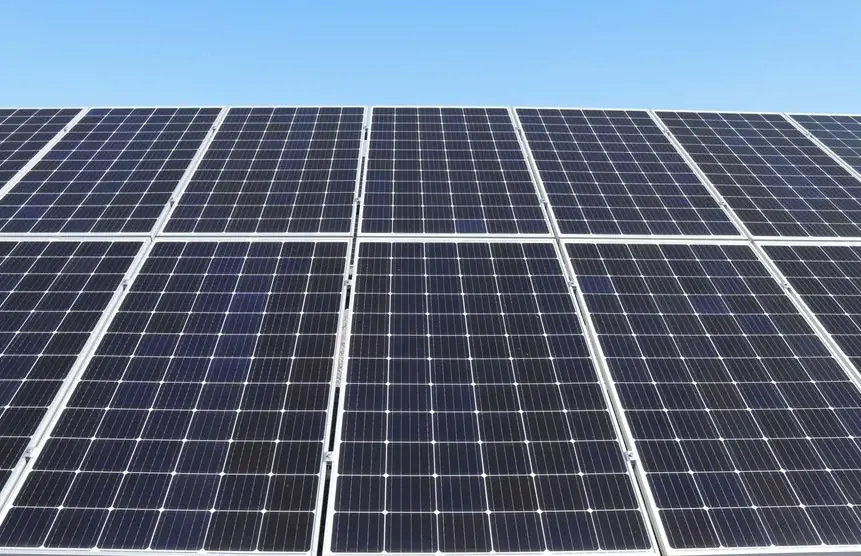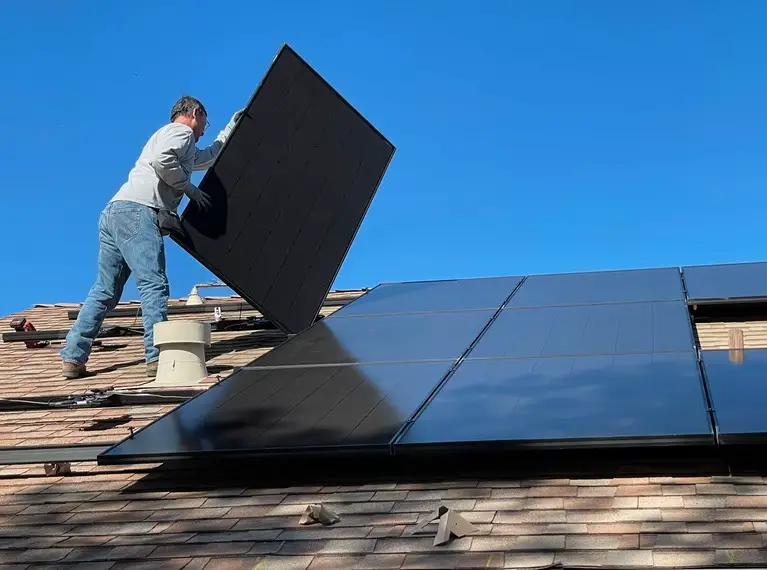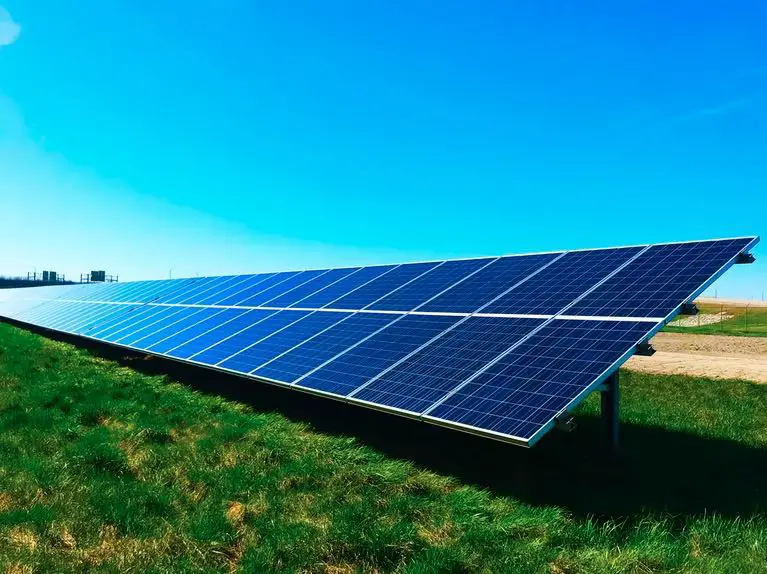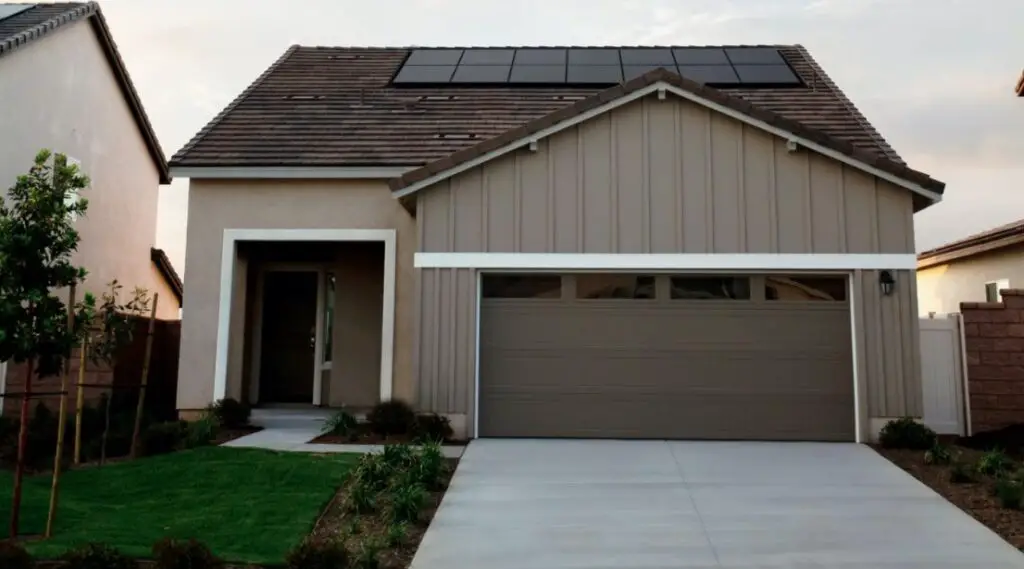Switching to solar energy is an excellent long-term investment that can lower utility costs and significantly reduce environmental impact.
However, determining your home's ideal solar power system involves understanding various factors, from energy consumption to roof space and sunlight availability.
Here’s an in-depth guide to help you navigate these considerations and make an informed choice.
Let's get straight to the point
Switching to solar energy can greatly reduce your utility bills and environmental footprint. The ideal system size for your home depends on electricity usage, roof space and orientation, sunlight exposure, and panel efficiency.
Assess your annual kWh usage from utility bills, then consider roof space: north-facing roofs are optimal in Australia for capturing sunlight.
At the same time, regions like Queensland require fewer panels due to higher sunlight hours.
Higher-efficiency panels benefit limited roof space, generating more power per panel but costing more upfront.
For guidance, small homes might need a 3-4 kW system, medium homes around 5-6 kW, and large homes 8-10 kW. Investing in high-efficiency panels maximises output and long-term savings, making solar a smart, sustainable choice for the future.
1. Factors Influencing Solar Power Requirements

To select the right solar power system for your household, you must examine key factors such as energy consumption, roof space, sunlight exposure, and the efficiency of the solar panels you’re considering.
Electricity Usage
Your home’s electricity consumption is the most crucial determinant of how much solar power you’ll need. You can easily find this information on your utility bills, which typically display your monthly and annual consumption in kilowatt-hours (kWh).
Here’s a general breakdown of average monthly consumption based on home size and climate:
- Small homes in mild climates: Typically use around 500-700 kWh monthly.
- Medium-sized homes: Average between 1,000-1,500 kWh each month.
- Large homes in hotter climates: With more air conditioning, these homes may consume 2,000 kWh or more monthly.
By summing up your total kWh usage over the past 12 months, you can obtain your annual energy consumption, which is key to estimating the solar system size that can cover your household’s needs.
Roof Space, Orientation, And Obstructions
The space available on your roof, as well as its orientation and any potential obstructions, will impact how many panels you can install and their efficiency:
- Roof Space: Larger homes often have more roof space, enabling the installation of additional panels. Each standard solar panel typically requires about 1.5 square meters (16 square feet).
- Orientation: In Australia, north-facing roofs are optimal for solar panels, receiving the maximum sunlight exposure. East- or west-facing roofs can still be viable but may require more panels to generate the same amount of power.
- Obstructions: Elements like chimneys, skylights, and roof vents can limit the available space, potentially affecting system size and efficiency.
If your roof space or orientation is limited, higher-efficiency panels might be a worthwhile investment, as they can produce more power with fewer panels.
Sunlight Hours Based On Geographic Location
The amount of sunlight your location receives will directly affect your solar panels' efficiency and power output. Australia’s diverse climate zones mean different areas experience varying sunlight levels, influencing how many panels you’ll need:
- High Sunlight Regions: Places like Queensland and Western Australia experience extended peak sunlight hours, so fewer panels are needed to achieve the same output.
- Moderate Sunlight Regions: Areas in Victoria and New South Wales with fewer peak sunlight hours may require larger systems for comparable energy output.
Generally, Australian locations receive 4-7 hours of peak sunlight daily. Inland areas often have higher sunlight hours than coastal regions, making them ideal for solar energy production.
Solar Panel Wattage And Efficiency
The wattage of solar panels—how much power they generate under ideal conditions—affects the number of panels needed for your setup:
- Standard Panels: These typically generate between 250-400 watts.
- High-Efficiency Panels: High-efficiency panels, rated between 370 and 400 watts, produce more energy in less space, making them suitable for homes with limited roof space.
A higher-wattage panel means you’ll need fewer panels overall. For instance, a 320-watt panel can produce 3.2 kWh of energy if exposed to 10 hours of direct sunlight daily.
While high-efficiency panels come with a higher upfront cost, they can reduce the total system size and overall installation costs.
2. Steps To Calculate The Right Solar Power System Size

Once you know your annual energy consumption, you can estimate the solar power system size needed to meet your energy needs. Here’s a step-by-step approach:
Step 1: Estimate Daily Energy Needs
Calculate your daily energy needs by dividing your annual energy consumption by 365. For example, if your total yearly usage is 10,000 kWh, your daily requirement would be around 27.4 kWh.
Step 2: Factor In Peak Sunlight Hours
Divide your daily energy requirement by the average peak sunlight hours in your area to get the system size needed to cover your energy needs. If you live in Brisbane, with around five peak sunlight hours per day:
27.4 kWh/5 hours=5.48 kW27.4 \text{ kWh} / 5 \text{ hours} = 5.48 \text{ kW}27.4 kWh/5 hours=5.48 kW
Thus, a 5.5 kW system would cover your daily energy requirements.
Step 3: Calculate The Number Of Panels Needed
Divide the total system size by the wattage of the panels you plan to use. For instance, if you select 320-watt panels:
5,500 watts/320 watts per panel≈17 panels5,500 \text{ watts} / 320 \text{ watts per panel} \approx 17 \text{ panels}5,500 watts/320 watts per panel≈17 panels
Therefore, a Brisbane household with a daily need of 27.4 kWh would need about 17 panels with a 320-watt capacity.
3. Solar Power System Examples For Different House Sizes
To give a clearer picture, here are some general solar power requirements for different home sizes:
Small Homes (1-2 Bedrooms)
- Energy Consumption: 300-700 kWh monthly.
- Location Example: Sydney, with moderate sunlight.
- System Size: 3-4 kW.
- Panels Needed: Around 10-12 panels (320 watts each).
- Expected Savings: Potentially up to 70% of electricity bills.
Medium-Sized Homes (3 Bedrooms)
- Energy Consumption: 1,000-1,500 kWh monthly.
- System Size: 5-6 kW.
- Panels Needed: Approximately 16-20 panels.
- Coverage: This system size can eliminate or significantly reduce monthly electricity costs.
Large Homes (4+ Bedrooms)
- Energy Consumption: 2,000 kWh or more monthly, especially if using air conditioning, pool heating, etc.
- System Size: 8-10 kW.
- Panels Needed: About 25-30 panels.
- Location Considerations: Regions with fewer peak sunlight hours may require slightly larger systems to achieve the same energy coverage.
4. Benefits Of Investing In High-Efficiency Solar Panels

While high-efficiency solar panels come at a higher price, they offer several advantages that can make them worthwhile in the long run:
- Space Efficiency: Higher-wattage panels mean fewer panels are needed, ideal for homes with limited roof space.
- Improved Performance in Low Light: High-efficiency panels perform better in low-light conditions, maximising output even during cloudy or overcast days.
- Long-Term Durability and Warranty: These panels generally come with extended warranties, offering better returns on investment through greater reliability and performance.
By choosing high-efficiency panels, you can reduce the size of your overall system, lower installation costs, and maximise your available roof space.
Conclusion
Switching to solar energy is a smart investment for homeowners looking to cut utility costs and reduce environmental impact.
By assessing key factors—electricity usage, roof space, sunlight exposure, and panel efficiency—you can choose a system tailored to your needs.
Though pricier, high-efficiency panels maximise power generation in limited spaces and offer long-term durability, enhancing the value and sustainability of your home.
A well-planned solar setupbrings financial benefits and contributess to a greener future, making solar energy a rewarding choice for years to come.
FAQs About Solar
In order to calculate how many solar panels you need, you need to divide the total system size by the production ratio by the panel wattage.
With a modern solar energy system, including power storage, you can definitely run a whole house completely on solar power. Today's high-efficiency solar panels and solar batteries make it cheaper than ever before to power an entire home exclusively using solar energy.
To make the average amount of energy used by a home in America, a 2,000 sq. ft. home would need between 16 and 21 solar panels. That's assuming the home has a good south-facing roof that gets a full amount of sunlight every day.
If your energy needs are around 1,000 to 5,000 watts, go for a 24 volt system. If your energy needs are over 3,000 watts, go for a 48 volt system. Large off-grid houses often use 48 volt systems.
Solar photovoltaic (or PV) panels convert the energy in sunlight into electricity, and this is effectively free electricity that can be used in your house (once the cost of installing the panels has been taken into account, of course).

